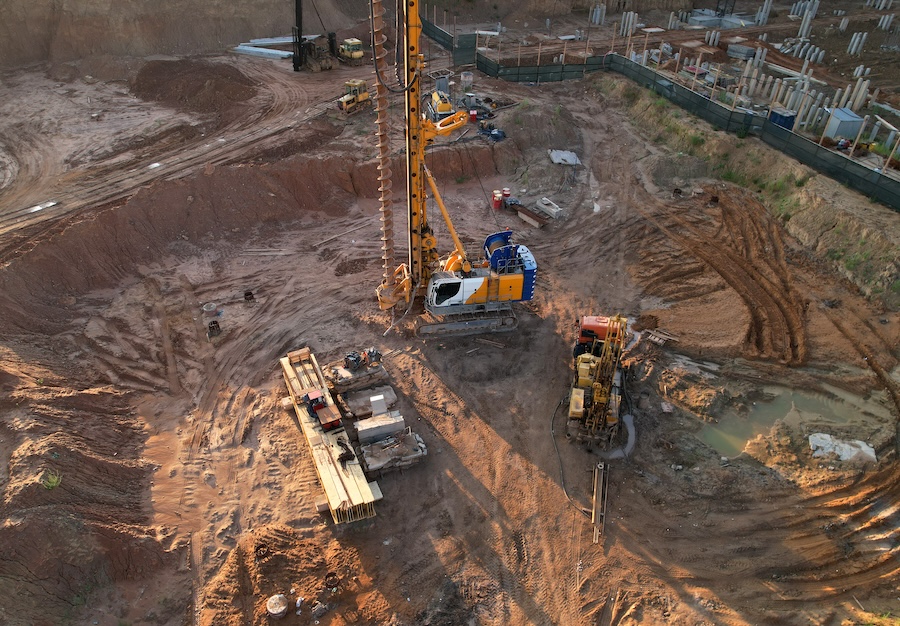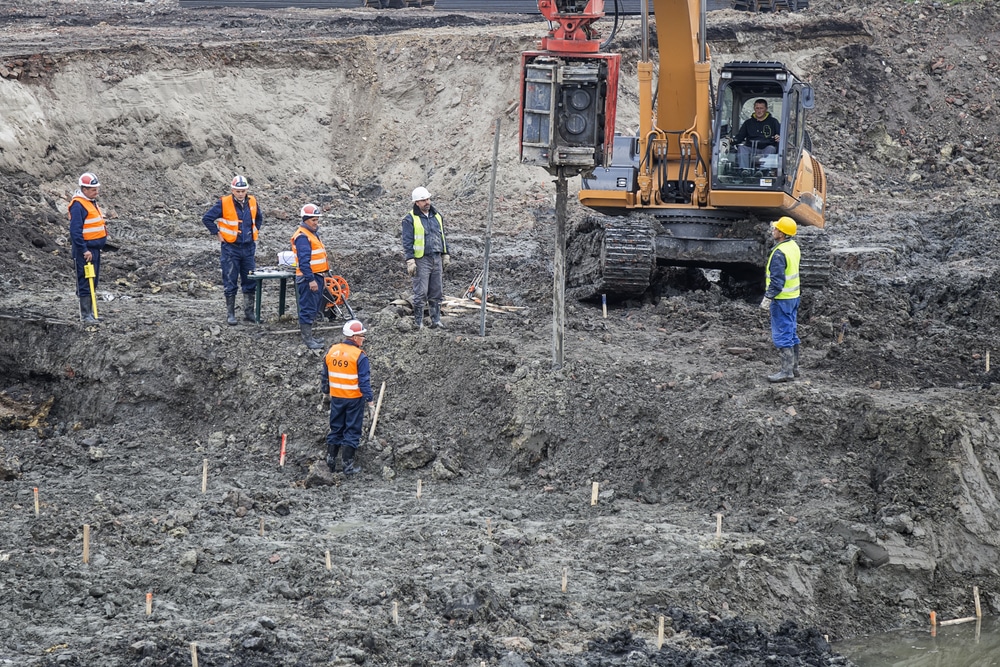Just How a Skilled Tailings Engineer Can Optimize Your Mining Operations
Wiki Article
Checking Out the Ingenious Methods and Technologies Forming the Future of the Geotechnical Industry for Lasting Engineering Solutions
The geotechnical sector is undergoing a transformative change, driven by cutting-edge methods and modern technologies that highlight lasting engineering options. Advanced dirt stablizing methods, the usage of clever materials, and the application of data analytics are redefining how we approach framework difficulties.Advanced Dirt Stablizing Methods
Soil stabilization is a crucial procedure in geotechnical design, targeted at boosting the physical residential or commercial properties of soil to improve its load-bearing ability and toughness. Advanced soil stablizing methods play a crucial function in addressing obstacles associated with weak or unsteady dirts, therefore making it possible for safe and efficient construction methods.Amongst the prominent approaches, chemical stablizing includes making use of additives such as lime, cement, or fly ash, which react with soil fragments to create a more cohesive mass. This strategy is especially reliable in boosting the stamina and moisture resistance of expansive clay soils. Mechanical stablizing, on the various other hand, entails the physical change of soil homes through compaction or the consolidation of granular materials, resulting in improved thickness and stability.
One more innovative technique is making use of geosynthetics, which give reinforcement and reduce dirt disintegration while improving drainage. Techniques like soil blending and deep soil stabilization are also getting grip, permitting for in-situ therapy of problematic soils. Jointly, these advanced techniques not just improve the performance of soil frameworks but also add to sustainable design practices by lessening the need for substantial excavation and product transport.
Smart Products in Geotechnics
Innovation goes to the center of geotechnical engineering, particularly with the incorporation of wise materials that improve the efficiency and performance of soil structures. Smart products, such as form memory alloys, piezoelectric materials, and self-healing polymers, are changing the method designers come close to soil stablizing and infrastructure durability (engineer of record). These products can adapt to transforming ecological problems, reply to anxiety, and even repair themselves, considerably enhancing the strength of geotechnical systemsFor example, piezoelectric materials can generate electrical charges in reaction to mechanical stress and anxiety, offering prospective for real-time monitoring of soil problems and structural honesty. Similarly, self-healing materials can autonomously repair problems and fractures, reducing upkeep prices and extending the lifespan of geotechnical properties. The assimilation of these smart materials not only boosts the mechanical buildings of soil but additionally adds to sustainable engineering methods by minimizing source usage and environmental impact.
As the geotechnical industry proceeds to evolve, the adoption of smart materials will play an essential duty in creating cutting-edge services, guaranteeing that facilities are not only robust however likewise versatile to future challenges. This transformative method is positioned to redefine the requirements of safety and security and efficiency in geotechnical design.
Information Analytics for Facilities
The assimilation of smart products in geotechnical engineering has actually paved the way for advanced approaches, specifically in the realm of information analytics for framework. This ingenious technique leverages considerable information collection and logical techniques to enhance decision-making procedures throughout the facilities lifecycle. By making use of sensors installed in wise products, engineers can continually keep track of important specifications such as dirt security, dampness levels, and architectural stability.Data analytics enables the makeover of raw data right into actionable insights, enabling predictive maintenance and boosted threat management. Advanced algorithms and artificial intelligence methods promote the identification of patterns and anomalies, which can enhance and educate timely interventions resource allotment. Furthermore, incorporating geographic details systems (GIS) enhances spatial analysis, further improving the decision-making structure.
By taking advantage of the power of data analytics, the geotechnical industry is placed to not only enhance current methods yet additionally pioneer innovative solutions for future infrastructure difficulties. This harmony of technology and design principles will specify the future of lasting framework advancement.

Sustainable Ground Enhancement Approaches
Different sustainable ground improvement methods are becoming essential solutions to attend to the obstacles of geotechnical engineering while reducing ecological influence. These approaches not only improve soil performance yet likewise advertise environmental stewardship by lowering dependence on traditional, a lot more invasive techniques.
An additional innovative approach is the application of geosynthetics, which consists of naturally degradable materials that strengthen dirt while advertising drainage and disintegration control - consulting engineer. This lowers the requirement for hefty machinery and lessens site disturbance, therefore maintaining regional communities
Furthermore, methods such as vibrant compaction and vibro-replacement have advanced to consist of sustainable techniques, reducing and integrating recycled materials carbon impacts. These approaches exemplify the industry's shift in the direction of more ecologically responsible solutions, ensuring that ground renovation not only fulfills engineering needs but also contributes favorably to the surrounding atmosphere.
Developments in Ecological Surveillance
Over the last few years, developments in ecological surveillance have dramatically boosted the ability to evaluate and manage geotechnical jobs with very little eco-friendly disruption. Innovative modern technologies, such as remote noticing, Web of Things (IoT) tools, and real-time data analytics, are transforming just how ecological impacts are determined and reduced.Remote noticing technologies, including satellite imagery and airborne LiDAR, promote the rapid assessment of land use adjustments and ecological conditions - geo tech engineer. These devices enable continuous surveillance of sites, allowing designers to identify potential problems prior to they rise. Additionally, IoT devices, equipped with sensing units for specifications like soil temperature, dampness, and gas exhausts, offer online information streams that improve the understanding of site-specific ecological variables
Real-time data analytics better fine-tune decision-making processes by incorporating data from different sources, allowing for positive management strategies. This alternative technique not just guarantees conformity with environmental laws however likewise promotes lasting methods within the geotechnical market.
As these developments proceed to progress, they hold the prospective to link the gap between design goals and environmental stewardship, cultivating a much more lasting future for geotechnical projects worldwide.
Final Thought
To conclude, the geotechnical industry is going through a transformative advancement driven by ingenious strategies and innovations that focus on sustainability. Advanced dirt stabilization techniques, the assimilation of clever materials, and the application of data analytics jointly enhance the durability and effectiveness of facilities. Sustainable ground renovation techniques and technologies in ecological tracking underscore the market's dedication to eco-friendly stewardship. These advancements not only address contemporary engineering challenges but likewise lead the way for a more lasting future in geotechnical practices.Strategies like soil blending and deep soil stablizing are additionally gaining traction, allowing for in-situ therapy of troublesome dirts. Jointly, these tailings engineer innovative methods not just improve the efficiency of dirt frameworks however additionally add to lasting engineering techniques by decreasing the requirement for substantial excavation and product transportation.

Report this wiki page